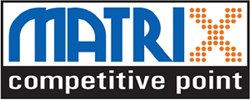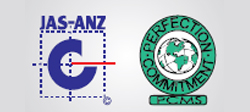Certification in Financial & Valuation Modeling (CFVM)
Copal Institute and AIMA jointly bring Financial & Valuation Modeling Certificate Program
In today's world of extensive data where decisions are highly quantitative based financial modeling has become an indispensable tool. It is the most sought after skill required in the field of investment banking, equity research , project management, commercial banks and mostly all other sectors in the financial services industry . Financial modeling is the art of building a model using excel to depict financial statements and investment analysis. It builds a structure that integrates various statements and schedules to enable decision making. A financial model represents the performance of a business, a project or any other investment.
This Financial & Valuation modeling program involves the fundamental theories and practices of valuation analysis, strategy analysis, prospective analysis, DCF modeling, trading comparables and transaction comparables. Modeling through Excel will build enough confidence in the participants so that they are able to create their own financial model right from scratch, and use it for solving their business problems. The program is designed to offer students the intensive instruction and training needed to successfully compete in rapidly developing global financial markets.
Learning Objectives
After completing this course, the participants will be able to:
- Build a financial model from scratch as done at financial institutions
- Work on Excel and use formatting best practices, efficient formula construction, and appropriate driver selections
- Use Advanced Excel functions to present various sensitivities to projected financial metrics
- Fix circularity problems, iteration, and other common modeling troubleshooting
- Cross check the Balance Sheet/ Cash Flow Statement
- Understand and describe valuation and how historical valuation is done
- Understand and explain the techniques, elements and approaches of forecasting
- Provide an overview of Discounted Cash Flow
- Explain the Dividend Discount Model
- Calculate the Free Cash Flow to Firm (FCFF) & Free Cash Flow to Equity (FCFE)
- Calculate the Discount Rate (Cost of Debt, Cost of Equity & Cost of Capital)
- Identify the Revenue Drivers and Cost Drivers
- Prepare a Full DCF Model
- Calculate Equity Value Multiples: P/E, P/CF, P/BV, P/S, PEG, Dividend Yield
- Provide an overview of Trading Comparables
- Calculate basic EV and perform various CACS Adjustments
- Normalize the Earnings and identify the exceptions
- Calculate Last Twelve Months (LTM) or Trailing Twelve Months (TTM)
- Perform Trading Multiples analysis - EV/EBITDA, EV/EBIT, EV/Sales
- Provide an overview of Transaction Comparables
- Describe the different kind of Deal Considerations
- Practice working on the Transaction Template
- Perform the Private and Public Transaction Comp
- Perform Transaction Multiples analysis - EV/EBITDA, EV/EBIT, EV/Sales









